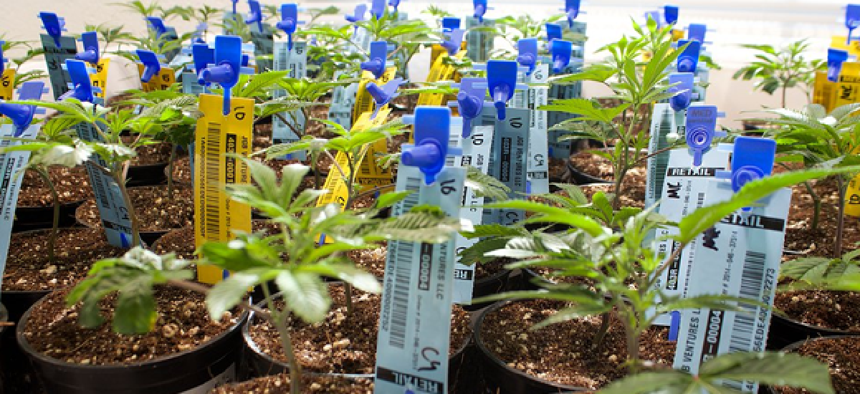California tracks marijuana from seed to sale

The track-and-trace system uses RFID tags to ensure compliance and public health.
Track-and trace-technology has become so ingrained in daily life that consumers expect to be able to follow the new pair of shoes they ordered online through the package delivery system to their front porch. This kind of technology is also playing an important role in monitoring the sale of marijuana in states like California, which just made the drug available for recreational use.
To ensure regulatory compliance and public health, California needed a system that would allow it to monitor and audit facilities, inventory, licenses, transport, sales and tax. It landed on a software called Metrc created by Franwell, which is also used in Alaska, Colorado, Maryland, Michigan, Nevada, Ohio and Oregon.
Designed for government agencies, the Metrc cloud-hosted online reporting system tracks commercial cannabis activity and movement across the distribution chain -- from the time a seedling is 8 inches tall, through the packaging process and any transfers that take place, and to the final sale.
This is done with RFID tags: Mertc creates and delivers plant and package tags to licensees that include numbers and barcodes indicating the facility name, license number and plant identification number. The RFID tags can be read quickly and from 10 to 15 feet away so the monitoring doesn't disturb the plants.
The system creates a chain of custody for the product, tracking multiple facilities, patients, plants, packages, sales and transfers.
The cloud-based solution, which is used by both industry and regulators, includes a browser interface and a mobile application. The backend features secure web services, database and an application programming interface, that officials can use to pull data on a secure validated connection. Government regulators can use the reporting engine to build ad hoc reports based on their individual needs.
Although growers and packagers are responsible for maintaining information about their cannabis and cannabis product inventories, temporary licensees are not yet required to use the Mertc system. That put new licensees in a bind, according to a Jan. 2 Associated Press report that said some businesses were relying on pen and paper because the electronic system is not yet available to them.
“The track-and-trace system has been operational as of January 2, 2018, as originally planned,” Rebecca Forée, a spokesperson for California Department of Food and Agriculture, explained via email. “Once we have completed and approved annual cannabis licenses -- and the licensees have completed a state-mandated training on the California Cannabis Track-and-Trace (CCTT) system -- the system will be used to record the inventory and movement of cannabis and cannabis products through the state’s commercial cannabis supply chain, from cultivation to sale.”
The system offers "significant dashboarding capabilities that are standard, as well as business rules that can be configured based on specific client requirements,” Forée said.
The information in the database can “only be viewed by the licensee and authorized employees of the state of California and any city, county, or city and county officials required to perform related duties pursuant to [Medicinal and Adult-Use Cannabis Regulation and Safety Act] or a local ordinance,” she said. Law enforcement can also access it upon request.
An important capability of the system, which the state specifically requested in its proposal process, is the interoperability between the tracking system and the state's licensing system. Metrc connects to the state licensing system through an API and uses the information to create licensee records, Forée said.
California's licensing system was developed by Accela, a government cloud service provider with experience automating licensing and permitting. Its marijuana web portal – also used in the city and county of Denver, Colo. – makes it easier for agencies to process applications, renewals, service requests and complaints. Customers and citizens stay informed via messages throughout the process, and automated reporting increases transparency.





